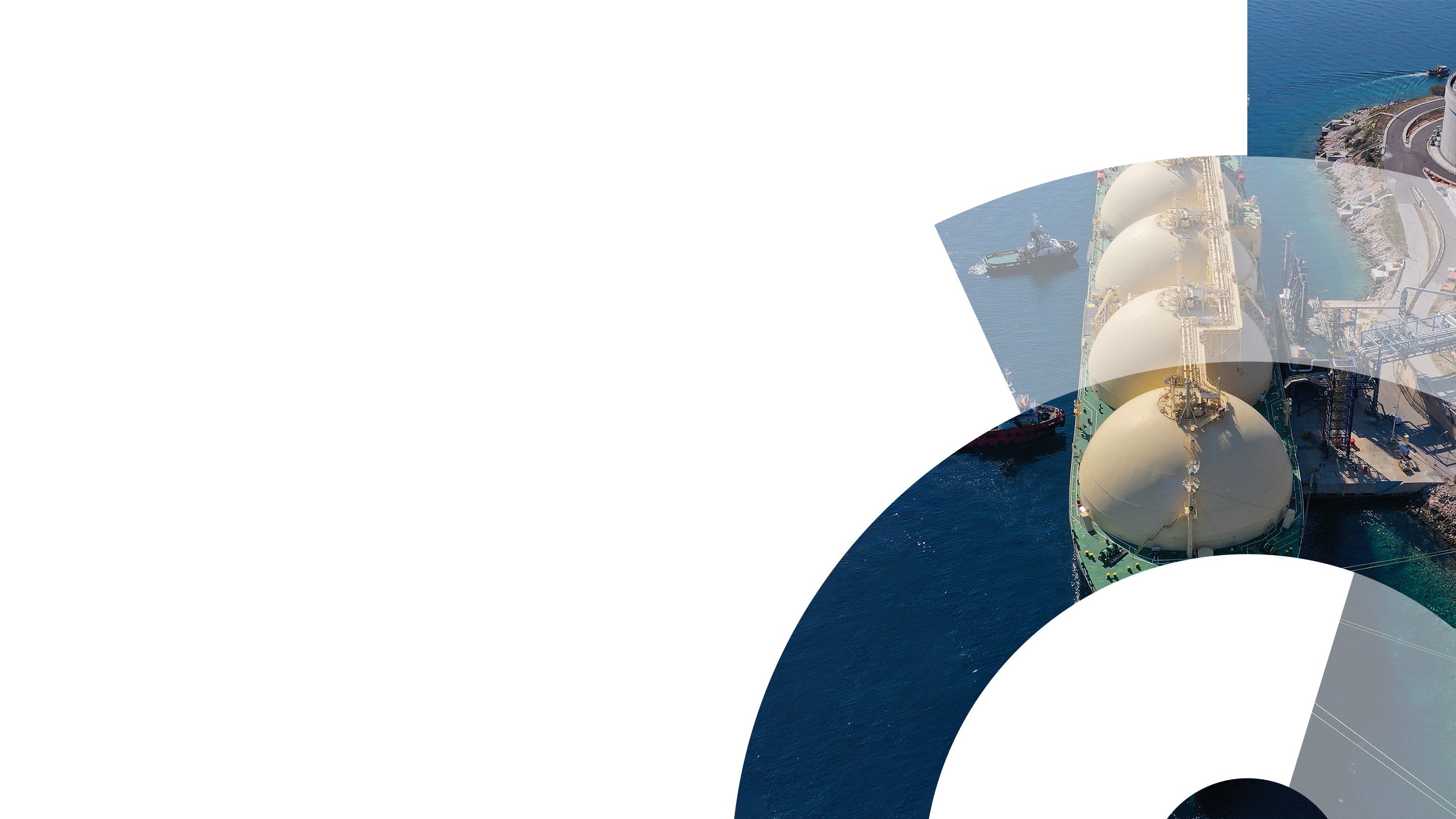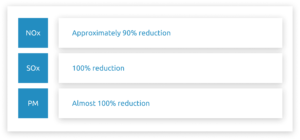
LNG
What is LNG?
LNG is Liquified natural gas primarily produced from cooled down methane.
LNG shares many characteristics with natural gas used for households, power generation and industrial use.
The technology for burning, storing and producing LNG has been readily available for decades. As a bunker fuel, LNG is increasingly being viewed as a transition fuel rather than a long-term solution.
LNG is used as fuel on more than 200 vessels (excluding LNG-carriers) using dual-fuelled engines.
In this section
What are the characteristics & technology of LNG?
- LNG of all kinds is almost entirely comprised of methane, which is a colorless, flammable, odorless gas at ambient temperatures.
- To become liquefied, it must be cooled to approximately -162°C.
- When liquefied, its volume is reduced by a factor of 600 and the gas is no longer flammable unless heated and mixed with air.
- LNG has approximately half the density of VLSFO, but a 20% higher calorific value. Moreover, LNG has a 15% higher calorific value on MGO 0.1%. Thus, a shipowner would need fuel tanks 1.8-9 times the size of traditional tanks to get the same energy output.
- Can be replaced by bio- or e-LNG in the future with lower carbon.
- At larger-scale import and export terminals, LNG is widely available. In many locations, investments are currently being made to make LNG available for fuel supply.
- As of 2022, around 200 ports offer LNG bunkering facilities.
- The number of LNG barges will increase in the coming years, enabling quicker turn-around for customers.
- Use of LNG for bunkers is fully regulated and governed by all class societies.
- A spill of LNG in the ocean is considered less hazardous to the environment than fuel oil due to its fast dispersion, where the gas will boil off quickly.
- Risks associated with using LNG as a bunker fuel include is flammability and its extremely cold liquid temperature of -162°C. As most of the gas used onboard vessels is in a liquid state, inhalation proves less of a risk.
Market Prices
- LNG benchmark price publications are widely available, as S&P Global Platts, Ship & Bunker, and Argus publish data for delivered LNG as bunker fuel daily.
- LNG derivative contracts are offered in major ports, enabling fuel price hedging.
- Currently, most LNG bunkers are sold on term contracts, typically for one to five years. However, some spot volume has also emerged in larger markets.
What is the Environmental impact?
- Reduction in emissions depends on the engine technology.
- The life-cycle emissions of LNG has little advantage over traditional marine fuels except for Sulphur Oxide (Sox) and particulate matter (PM).
- If an engine is not able to combust all the methane, it can escape to the atmosphere. This phenomenon is seen more frequently with duel-fueled engines than pure LNG-engines.

Source: Oxford Institute for Energy Studies, 2018

LNG
What Is LNG?
Is this an established marine fuel today?
Is it a “Green Fuel”
What are the main safety considerations?
How is it stored?
How is it burned onboard?
Where can I get it from?
In this section

Speak to our experts
Our people think differently. We are an independent, privately owned, company with team members drawn from a wide variety of maritime backgrounds. We are passionate about finding new ways to help you run a cleaner and more efficient fleet, telling it straight and being transparent and inclusive.